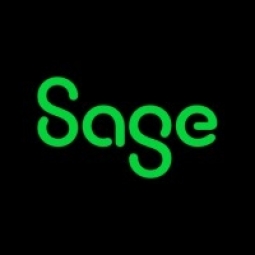下载PDF
Vineland Estates Toasts the Merits of Sage 300
技术
- 功能应用 - 企业资源规划系统 (ERP)
适用行业
- 食品与饮料
适用功能
- 销售与市场营销
用例
- 库存管理
- 供应链可见性(SCV)
服务
- 系统集成
挑战
Vineland Estates 酒庄位于尼亚加拉葡萄酒产区的中心地带,每年生产 47,000 箱葡萄酒。葡萄酒运往加拿大各地和十几个其他国家。酒庄受多家机构监管,每个机构都要求提供有关生产和分销的详细报告。酒庄还需要准确的从田间到酒杯的成本信息。葡萄酒行业复杂且监管严格,Vineland Estates 酒庄面临着独特的业务挑战。该公司经营着一家葡萄酒俱乐部,会员每月支付固定费用,即可将 Vineland Estates 葡萄酒送到家中。该计划迅速流行起来,目前拥有 1,000 多名会员。大多数会员通过信用卡支付月费。
关于客户
Vineland Estates 酒庄坐落在尼亚加拉葡萄酒产区中心,位于历史悠久的门诺派农场。该酒庄每年用 150 英亩葡萄园和周围农场种植的葡萄生产 47,000 箱葡萄酒。葡萄酒运往加拿大各地和其他十几个国家,并在那里赢得了无数国内和国际奖项。酒庄的品酒室、餐厅和专属葡萄酒俱乐部确保 Vineland Estates 葡萄酒受到当地和世界各地爱好者的喜爱。葡萄酒行业复杂且受到严格监管,面临着独特的商业挑战;Vineland Estates 酒庄借助 Sage 300 的强大功能应对这些挑战。
解决方案
Vineland Estates Winery 使用 Sage 300 软件来满足其业务需求。该软件是一个可靠而强大的平台,可以满足该酒厂的大部分开箱即用需求,并且经过量身定制,可满足该酒厂的所有行业和运营特定需求。订单到达后,酒厂的异地仓库会打印拣货单。在那里,订单在 Sage 300 应用程序中进行拣货、包装、发货和确认。然后,会计部门会收到发货通知,以制作发票。该酒厂使用 Sage 300 的物料清单功能来记录装瓶、装瓶和贴标签的累计成本。该酒厂的 Sage 业务合作伙伴与该公司密切合作,开发定制报告和功能,以满足其独特需求。
运营影响
数量效益
相关案例.

Case Study
The Kellogg Company
Kellogg keeps a close eye on its trade spend, analyzing large volumes of data and running complex simulations to predict which promotional activities will be the most effective. Kellogg needed to decrease the trade spend but its traditional relational database on premises could not keep up with the pace of demand.

Case Study
HEINEKEN Uses the Cloud to Reach 10.5 Million Consumers
For 2012 campaign, the Bond promotion, it planned to launch the campaign at the same time everywhere on the planet. That created unprecedented challenges for HEINEKEN—nowhere more so than in its technology operation. The primary digital content for the campaign was a 100-megabyte movie that had to play flawlessly for millions of viewers worldwide. After all, Bond never fails. No one was going to tolerate a technology failure that might bruise his brand.Previously, HEINEKEN had supported digital media at its outsourced datacenter. But that datacenter lacked the computing resources HEINEKEN needed, and building them—especially to support peak traffic that would total millions of simultaneous hits—would have been both time-consuming and expensive. Nor would it have provided the geographic reach that HEINEKEN needed to minimize latency worldwide.

Case Study
Energy Management System at Sugar Industry
The company wanted to use the information from the system to claim under the renewable energy certificate scheme. The benefit to the company under the renewable energy certificates is Rs 75 million a year. To enable the above, an end-to-end solution for load monitoring, consumption monitoring, online data monitoring, automatic meter data acquisition which can be exported to SAP and other applications is required.

Case Study
Coca Cola Swaziland Conco Case Study
Coco Cola Swaziland, South Africa would like to find a solution that would enable the following results: - Reduce energy consumption by 20% in one year. - Formulate a series of strategic initiatives that would enlist the commitment of corporate management and create employee awareness while helping meet departmental targets and investing in tools that assist with energy management. - Formulate a series of tactical initiatives that would optimize energy usage on the shop floor. These would include charging forklifts and running cold rooms only during off-peak periods, running the dust extractors only during working hours and basing lights and air-conditioning on someone’s presence. - Increase visibility into the factory and other processes. - Enable limited, non-intrusive control functions for certain processes.

Case Study
Temperature Monitoring for Restaurant Food Storage
When it came to implementing a solution, Mr. Nesbitt had an idea of what functionality that he wanted. Although not mandated by Health Canada, Mr. Nesbitt wanted to ensure quality control issues met the highest possible standards as part of his commitment to top-of-class food services. This wish list included an easy-to use temperature-monitoring system that could provide a visible display of the temperatures of all of his refrigerators and freezers, including historical information so that he could review the performance of his equipment. It also had to provide alert notification (but email alerts and SMS text message alerts) to alert key staff in the event that a cooling system was exceeding pre-set warning limits.

Case Study
Coca-Cola Refreshments, U.S.
Coca-Cola Refreshments owns and manages Coca-Cola branded refrigerators in retail establishments. Legacy systems were used to locate equipment information by logging onto multiple servers which took up to 8 hours to update information on 30-40 units. The company had no overall visibility into equipment status or maintenance history.





